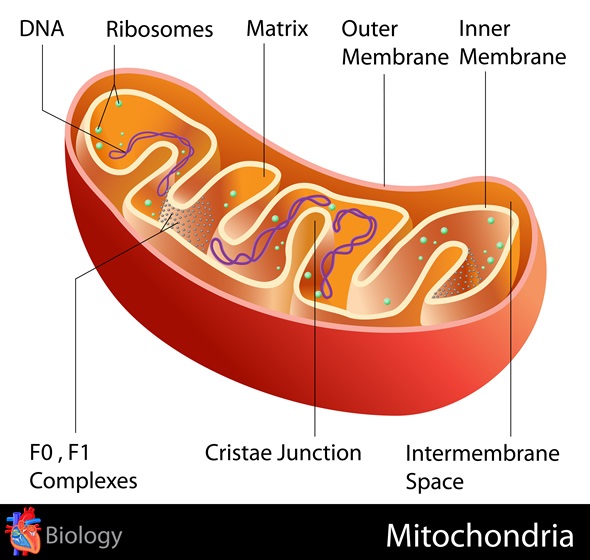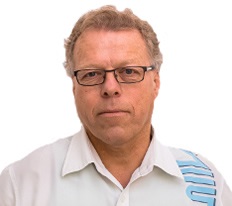Exactly as you say, mitochondria are considered ‘property’ of a cell. Each cell contains multiple mitochondria and each mitochondrion multiple copies of mtDNA.
According to our understanding, mitochondria undergo cycles of fusion-fission, i.e. they divide within the constraints of a cell and, upon cell division, each of the two daughter cells gets its ‘share’ of mitochondria.
This is still valid, of course. However, a new paradigm becomes clear, i.e. that, under certain circumstances, mitochondria can move between cells.

Copyright: snapgalleria via Shutterstock.com - Image ID: 142194019
How did you discover that mtDNA is capable of moving from cell to cell?
The very first experiments to indicate mtDNA movement between cells were performed by our collaborator Prof Mike Berridge (Malaghan Institute, Wellington, New Zealand).
They stripped cancer cells of their mtDNA and grafted them in mice to form syngeneic tumours. These tumours formed with some 3-week delay. Now the tumour cells in the carcinomas grown from the mtDNA-devoid cells again contained mtDNA.
We then sequenced the whole mtDNA in the parental cells and the cells isolated from tumours grown from mtDNA-devoid cells, and found that the latter carried polymorphisms of the host, not of the parental cell mtDNA. This is an unequivocal evidence for the host origin of mtDNA, implying its cell-to-cell ‘transfer’.
Does mtDNA only move from a healthy cell to a dysfunctional cell or can it also move in the opposite direction?
This is an interesting question and, of course, well worth investigating. We have preliminary data indicating that mtDNA moves, most likely within whole mitochondria, from a donor cell (we believe that a ‘hot’ candidate for a donor cell is the mesenchymal stem cell) into the cancer cell without mtDNA. On the other hand, this movement to cancer cells with mitochondria with mtDNA does not occur.
How much is currently known about the mechanism of transfer of mtDNA?
This is another excellent question that ought to be studied, and we are making some, albeit limited progress here at this stage.
There are several possibilities of the mechanism of mtDNA transfer. One is shedding of exosomes by the donor cell and their endocytosis by the recipient cell.
However, in this case, mitochondria with DNA would have to escape from the early endosome, when in the acceptor cell, otherwise they will be destroyed.
Cell fusion is another possibility, although we do not think that this is occurring.
A more likely option is transient formation of ‘tunnelling nanotubes’ (TNTs) between the donor and the acceptor cells that allows for movement of mitochondria from the former to the latter.
This mitochondrial trafficking is likely dependent on kinesin as the motor protein and several adaptor proteins that allow for it to ‘slide’ along the TNTs.
What further research is needed to understand this process?
The process of mitochondrial transfer (we can practically exclude the possibility of free mtDNA moving across) is not understood much at all.
There are several studies using cell culture conditions, indicating the involvement of TNTs, kinesin and adaptor proteins Milton and Miro-1.
While experiments with cultured cells are very interesting and suggest a possible mechanism, the molecular mechanism and regulation of this process in vivo may be quite different, given the three-dimensional arrangement, the role of the infiltrating cells, nutrient limitation, etc.
We will need highly sophisticated methodology of two-photon intravital imaging, a variety of cutting-edge molecular tools, etc.
It is not at all clear, what is the signal (or signals), which cells with mitochondria without DNA use to trigger mitochondrial transfer. What is the mechanism making sure that mitochondria with DNA move to the cell with malfunctional mitochondria, etc.
There are many other questions that one asks and that beg for answers. Undoubtedly, these processes will be, gradually, better understood, since horizontal transfer of mtDNA between cells challenges one of the dogmas of cell biology, i.e. that mitochondria are the ‘property’ of each cell.
What impact will your research have on our understanding of cancer?
Cancer and cancer cells keep surprising us. Several decades ago, against all odds, the process of angiogenesis was discovered. In this case, cancer cells starving for nutrients and oxygen ‘force’ endothelial cells to sprout off normal blood vessels to form vasculature in the progressing tumour.
In a similar way, we now believe that cancer cells without mtDNA (or with heavily damaged mtDNA) ‘force’ stromal cells to ‘donate’ their mitochondria to allow for tumour re-growth. This is consistent with the notion of unprecedented plasticity of cancer cells and their ability to overcome difficult situations.
This also tells us that tumours, to progress and metastatise, need respiration (oxidative phosphorylation, OXPHOS), a paradigm we refer to as ‘OXPHOS addiction’. This would mean that depriving tumours of respiration by targeting its key components (mitochondrial complexes) may be a very efficient way how to come up with novel and efficient anti-cancer therapies.
Do you think mtDNA movement could also occur in other diseases where mtDNA is defective, such as neurodegenerative diseases?
There is no doubt that mtDNA, within whole mitochondria, can move between cells in the context of other diseases than cancer.
There are papers indicating that mitochondria from mesenchymal stem cells can rescue alveolar epithelial lung cells following injury to their mtDNA.
It can be expected that mtDNA transfer occurs also within neurological disorders, although the evidence is still missing.
What are your further research plans?
Our interest is focused on cancer. We want to study trafficking of mitochondria in cancer as means that allow cancer cells with heavily damaged mtDNA to recover their function to initiation and propagate tumours.
We are interested in this process and how it is regulated, in particular in the whole animal, using experimental mice with syngeneic tumours.
A very important line of research stemming from our initial findings is the idea of OXPHOS addiction. That is:
- Is OXPHOS addiction a feature inherent across the landscape of neoplastic diseases?
- Is the level of this addiction different in various types of cancer?
- Can we utilise this to design novel and more efficient anti-cancer agents targeting components of cancer cell respiration?
These are only several of the lines of research we will pursue. Each of them presents a project in its own right with, possibly, very important findings.
Where can readers find more information?
Our findings were published in Tan et al (2015) Mitochondrial genome acquisition restores respiratory function and tumorigenic potential in cancer cells without mitochondrial DNA. Cell Metabolism 21, 81-94.
Our paper was previewed in this editorial: Maiuri MC, Kroemer G (2015) Essential role for oxidative phosphorylation in cancer progression. Cell Metab 21, 11-12.
It was highlighted in the following paper: Villanueva MT (2015) Metabolism: the mitochondria thief. Nat Rev Cancer 15, 70.
An excellent paper showing trafficking of organelles between cells was published in Rustom A et al (2004) Nanotubular highways for intercellular organelle transport. Science 303, 1007-1010.
The involvement of TNTs and possible mechanism of inter-cellular trafficking of mitochondria is in Ahmad T et al (2014) Miro1 regulates intercellular mitochondrial transport & enhances mesenchymal stem cell rescue efficacy. EMBO J 33, 994-1010.
About Professor Jiri Neuzil
 I obtained my PhD title in the Academy of sciences of Czechoslovakia, after which I was a Research Fellow in the Heart Research Institute in Sydney, Australia.
I obtained my PhD title in the Academy of sciences of Czechoslovakia, after which I was a Research Fellow in the Heart Research Institute in Sydney, Australia.
After 7 years, I worked as a Junior Group Leader at the Ludwig Maximilians University in Munich, Germany.
Since 2002, I am a staff member of Griffith University on the Gold Coast, Qld, Australia, where I am the Head of Mitochondria, Apoptosis and Cancer Research Group and, since 2008/9, Professor of Molecular Medicine.
Since 2006, I have an adjunct position in the Institute of Biotechnology in Prague, Czech Republic. I am interested in cancer biology, in particular the role of mitochondria as drivers of cancer and targets for anti-cancer therapy.